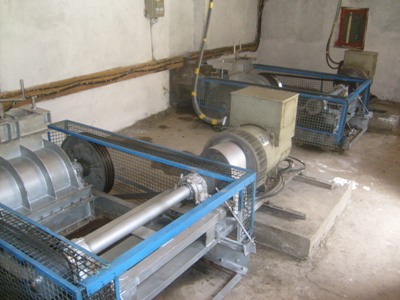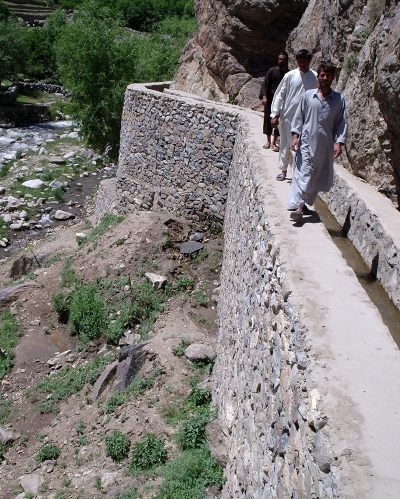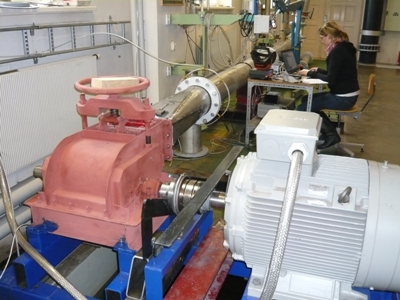 This
locally made
turbine kit and Chinese alternator was designed for
the thousands of stone water mills in Afghanistan. Over four thousand
crossflow turbines of this design have been installed
in Afghanistan. The design was developed and transferred to private
Afghan workshops by the International Assistance Mission (IAM).
 This
locally made
Electronic Load Control System (ELC) manages the
plant output and keeps the voltage at a set value (220V). Ca 1750 of
the
ELCs have been built and installed by local workshops. This ELC has a
built-in manual over-ride control which adds security for remote plants.
 These two "Pamir" turbines produce 65 kW electric power each. They provide 24/7 electricity for cooking, water heating, lights, TV's to over 200 rural families along the Panjshir River. This plant has been operating since January 2009.  TMT
(Traditional Mill
Turbine) kit placed alongside a functioning stone
water mill. Grind wheat and irrigate during the daytime, produce
electricity for lighting homes at night, or do all three if the
water flow is large enough.
 The
village community
usually provides the labor to build the channel which can be a
considerable amount of work.
|
Remote HydroLight Services
"bringing light to remote places"
Mission statement:
We:
Why micro-Hydropower?
Electricity
from
micro-hydropower is a clean,
safe, emission free, renewable energy. With proper
development it
is reliable, requires low maintenance, and results in a lower cost per
kW than other options such as: gasoline, diesel, or wind
generators, solar photovoltaic (PV) panels, or the environmental damage
and/or expense of bringing the grid from afar. Afghan
communities
can help install, operate, and maintain these power plants.
Community participation, self-sufficiency, and the benefits of reliable
lights bring pride, stability, and unity to communities.
Power
can be used for lights, radio, TV, computers, small industry (sewing
machines, agricultural processing), and large community water
heaters. Especially benefited are women and children who no
longer face the smell, smoke, danger, inconvenience, and cost of
lanterns. A consistent water supply allows power generation
24
hours/day even when there is no sun or wind. The generating
equipment produces low noise and can be built so it is not obstructive
or abusive to the environment. Water use is
“non-consumptive” in that the water flowing through
the
turbine returns to the river or stream it originated from and can be
reused for agricultural irrigation purposes.
 A Remote HydroLight Crossflow turbine was tested at the Waterpower Laboratory of the Norwegian University of Science and Technology, Tronheim, Norway. The maximum effeciency recorded was 78.6% at the turbine optimum operating point. See announcement.  This prototype Kaplan turbine (pulley protection is removed to show construction) has been testing since February 2010. Production units are now being made for Nangahar Province.  Ten workshops have received training to manufacture the Kaplan turbine More pictures: |